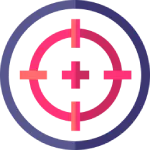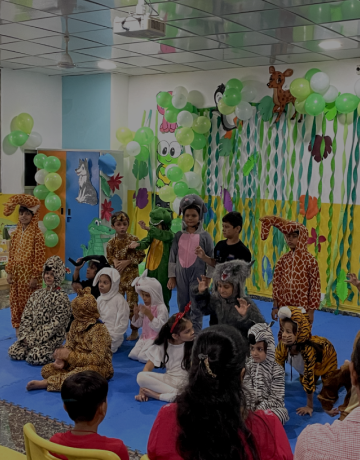Admissions Open for
Why Textile Class is Beneficial

Patience

Focus / Concentration

Problem-Solving

Stress Reduction

Attention to Detail
Textile Fundamentals

- Dyeing – The science of applying color to fabric or yarn to make it more visually appealing using dyeing and printing methods.
- Yarn – An uninterrupted line of fibers spun together, applied for weaving, knitting, or embroidery in textile education.
- Loom – A device or machine used to weaving yarn into fabric by interlacing threads in a structured pattern with industry grade stitching.
- Embroidery — A decorative sewing method that adds beautiful patterns and shapes to fabric, fostering construction skills of the studen
- Cotton — Soft natural fibers obtained from the cotton plant, important in the textile industry and fashion technology.

- Dyeing – The science of applying color to fabric or yarn to make it more visually appealing using dyeing and printing methods.
- Yarn – An uninterrupted line of fibers spun together, applied for weaving, knitting, or embroidery in textile education.
- Loom – A device or machine used to weaving yarn into fabric by interlacing threads in a structured pattern with industry grade stitching.
- Embroidery — A decorative sewing method that adds beautiful patterns and shapes to fabric, fostering construction skills of the studen
- Cotton — Soft natural fibers obtained from the cotton plant, important in the textile industry and fashion technology.
Highlights of our Textile

Nursery, K1, K2
- Open Line: Your child's opportunity to explore the world of fabrics through storytelling and sensory activities in a co-curricular textile lab in school.
- Basic Textures & Patterns: Fun-filled activities show how children can identify different textures, colors and patterns in textiles during curricular activities.
- Fabric Fun for Little Hands: Simple fabric crafts and weaving for fine motor skills, giving hands on experience.
- Creativity & Imagination: The open-ended play experience means that you can create as you go and this encourages curiosity and creative thinking related to textile designing.

Grades 1-2
- Fabric knowledge: Different types of fabric and their uses in everyday activities in a textile course for school students.
- Weaving & Hand-stitching: Exploring simple weaving techniques and basic hand-stitching using sewing machine tools.
- Acting Out Our Learning: Identify patterns in fabrics and develop simple textile designs, encouraging a future career in textile.
- Problem-Solving & Logical Thinking: Fun challenges with textile puzzles and craft projects to engage creativity and build on fashion design interest.

Grades 3-5
- Fabric Science and Innovations: Explore different types of natural and synthetic fibers and what allows each to be unique through textile design course.
- Handloom & Machine Weaving: Step-by-step loom stitching & simple machine stitching that support grade stitching and special machinery usage.
- Textile Art & Printing: Try tie-dye, block printing and fabric painting, essential parts of fashion studies.
- Practical Upcycling & Campus Sustainability: Learn about sustainable practices and make crafts with upcycled fabric, aiding future in fashion industry and higher education.

Nursery, K1, K2
- Open Line: Your child's opportunity to explore the world of fabrics through storytelling and sensory activities in a co-curricular textile lab in school.
- Basic Textures & Patterns: Fun-filled activities show how children can identify different textures, colors and patterns in textiles during curricular activities.
- Fabric Fun for Little Hands: Simple fabric crafts and weaving for fine motor skills, giving hands on experience.
- Creativity & Imagination: The open-ended play experience means that you can create as you go and this encourages curiosity and creative thinking related to textile designing.

Grades 1-2
- Fabric knowledge: Different types of fabric and their uses in everyday activities in a textile course for school students.
- Weaving & Hand-stitching: Exploring simple weaving techniques and basic hand-stitching using sewing machine tools.
- Acting Out Our Learning: Identify patterns in fabrics and develop simple textile designs, encouraging a future career in textile.
- Problem-Solving & Logical Thinking: Fun challenges with textile puzzles and craft projects to engage creativity and build on fashion design interest.

Grades 3-5
- Fabric Science and Innovations: Explore different types of natural and synthetic fibers and what allows each to be unique through textile design course.
- Handloom & Machine Weaving: Step-by-step loom stitching & simple machine stitching that support grade stitching and special machinery usage.
- Textile Art & Printing: Try tie-dye, block printing and fabric painting, essential parts of fashion studies.
- Practical Upcycling & Campus Sustainability: Learn about sustainable practices and make crafts with upcycled fabric, aiding future in fashion industry and higher education.
Our Textile Lab Setup

The school textile lab is designed to be a creative and immersive space where students can explore the art of weaving, fostering hands-on learning and artistic expression through fabric and design.
- • Interactive Quiz Board: A fun and educational hub displaying fundamentals of textile class related quizzes and facts.
- •Weaving-Inspired Design: Thread patterns on the ceiling and doors reflect key features of lab rooted in weaving.
- •Stool Tapestry Covers: Woven mats on stools serve as functional examples of tapestry weaving found in fashion design lab in school setups.
- • Comfortable Carpet Seating: Soft carpets create a cozy space for students to sit and weave, supported by lab includes decor for inspiration.
- •Foldable Pink Table: Allows flexibility for hands-on weaving sessions on the carpet, enhancing lab is equipped features.
Testimonials From Our Textile

Avika Goel
Nigidi, Pune
Explore the Textile Activity

Parents Share Their Stories
Frequently Asked Questions
Textile education in school introduces students to the study of fabrics, fibers, and textile production. It covers topics such as fabric types, weaving, dyeing, printing, and garment construction. Students learn about the history of textiles, sustainability, and the role of textiles in different cultures. Practical skills like sewing, embroidery, and textile design are often included. This subject helps develop creativity, problem-solving, and technical skills. It also raises awareness about the environmental impact of textiles and promotes sustainable fashion choices. Textile education can lead to careers in fashion, interior design, and textile manufacturing.
India offers several prestigious institutions renowned for their textile design programs. Among them, the National Institute of Fashion Technology (NIFT) stands out, with campuses in Delhi and Mumbai offering comprehensive courses that integrate traditional techniques with modern innovations. The National Institute of Design (NID) in Ahmedabad is also highly esteemed for its design education, including textile design. Additionally, the Indian Institute of Technology (IIT) Delhi provides advanced studies in textile technology. Other notable institutions include Pearl Academy in Delhi and the Symbiosis Institute of Design in Pune, both offering specialized programs in textile design. Each of these schools has its unique strengths, so it's advisable to research their specific programs to determine the best fit for your interests and career goals
Orchids The International School offers a variety of facilities for students passionate about textiles and fashion. The school provides extracurricular activities such as textile making, where students engage in practical learning experiences. For instance, at the Yari Road branch in Mumbai, students participate in craft-based skills like textile making, enhancing their understanding of fabric and design. Additionally, students have explored the Textile Lab at the Seawoods branch, delving into the wonders of textile design and creativity. These initiatives aim to nurture creativity and provide hands-on experience in the field of textiles and fashion
Orchids The International School integrates textile education into its curriculum, offering students hands-on experience in textile making. Activities such as letter weaving on tapestry looms and crafting incense holders with clay are part of this initiative. These programs aim to blend art and craftsmanship, fostering creativity among students. However, specific information about the availability of Textile Labs in all branches is not detailed in the provided sources. For precise details, it's advisable to contact the specific branch directly.
CBSE Schools In Popular Cities
- CBSE Schools in Bangalore
- CBSE Schools in Mumbai
- CBSE Schools in Pune
- CBSE Schools in Hyderabad
- CBSE Schools in Chennai
- CBSE Schools in Gurgaon
- CBSE Schools in Kolkata
- CBSE Schools in Indore
- CBSE Schools in Sonipat
- CBSE Schools in Delhi
- CBSE Schools in Rohtak
- CBSE Schools in Bhopal
- CBSE Schools in Aurangabad
- CBSE Schools in Jabalpur
- CBSE Schools in Jaipur
- CBSE Schools in Jodhpur
- CBSE Schools in Nagpur
- CBSE Schools in Ahmednagar
- CBSE School In Tumkur















